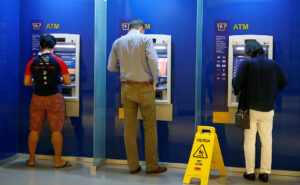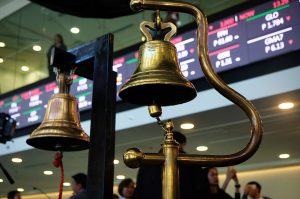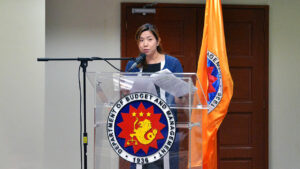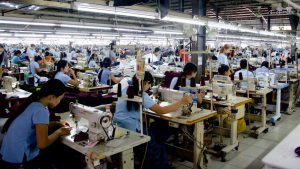By Abigail Marie P. Yraola, Deputy Research Head
THE COMBINED ASSETS of the Philippines’ biggest lenders rose in the first quarter, fueled by increasing confidence in the economy’s prospects.
The latest edition of BusinessWorld’s quarterly banking report showed that the aggregate assets of 44 universal and commercial banks (U/KBs) grew by 10.54% year on year to P24.93 trillion in the first quarter from P22.55 trillion a year ago.
This pace was faster than 7.6% logged in the last three months of 2023.
Asset growth was the fastest since it posted 11.25% in the first quarter of 2023.
Total loans of these big banks went up by 13.75% to P12.52 trillion in the January-to-March period, faster than the 10.84% a year ago.
In the first three months, lending growth logged its highest in 21 quarters or since the 15.13% logged in the fourth quarter of 2018.
The growth in assets and lending may be attributed to the improved economic outlook, after gross domestic product (GDP) expanded by 5.7% in the January-to-March period. Businesses are likely to borrow more to support investment plans while consumers may take out loans when they expect higher incomes.
BSP data also showed the share of bad loans to the total loan portfolio, also known as the nonperforming loan (NPL) ratio, jumped to 3.6% in the first quarter from 3.39% in the previous quarter. A year ago, NPL ratio stood at 3.63%.
Loans are considered nonperforming if any principal and/or interest are left unpaid for over 90 days from the contractual due date or accrued interests for more than 90 days have been capitalized, refinanced, or delayed by agreement.
The net NPL ratio, on the other hand, jumped to 1.5% from 1.48% in the previous quarter.
Meanwhile, the banks’ median return on equity (RoE), which is an indicator of profitability, dipped to 8.02% in the first quarter from 8.79% in the same period a year ago.
The RoE, the ratio of net profit to average capital, measures the amount that shareholders make on every peso they invest in a company.
Additionally, the big banks’ median capital adequacy ratio (CAR) — which reflects the lender’s ability to absorb losses from risk-weighted assets — reached 19.64% during the period. This was lower than the 19.73% in the same period last year and the 20.17% a quarter earlier.
The ratio remained well above the regulatory minimum of 10% set by the BSP as well as the international minimum standard of 8% under the Basel III framework.
The leverage ratio — which gauges the institution’s ability to absorb shocks by measuring the bank’s capital relative to total exposure — reached a median of 11.27% during the period.
The current figure exceeded the central bank’s 5% guideline as well as the international standard of 3%.
Meanwhile, the net interest margin (NIM) of these big banks slipped to 3.32% from 3.97% in the previous quarter.
This is an indicator of banks’ investing efficiency by dividing annualized net interest income by average earning assets.
During the January-to-March period, the return on assets (RoA), which measures the profit generated per peso of an asset, rose to 1.6% from 1.5% in the fourth quarter.
In the first quarter, BDO Unibank, Inc. (BDO) remained the largest bank in terms of total assets with P4.49 trillion, followed by Metropolitan Bank & Trust Co. (Metrobank) with P3.59 trillion and Land Bank of the Philippines (LANDBANK) with P3.29 trillion.
Sy-led BDO also led the industry in lending with P2.92 trillion worth of loans issued, followed by Bank of the Philippine Islands (BPI) with P2.03 trillion and Metrobank with P1.58 trillion.
In terms of deposits, BDO led with P3.63 trillion, followed by LANDBANK with P2.9 trillion and BPI with P2.42 trillion.
Among banks with at least P100 billion assets, MUFG Bank Ltd., logged the fastest year-on-year asset growth with 27%, followed by Security Bank Corp., (22.51%) and Metrobank (22.08%).
Meanwhile, Philippine Trust Co. was the most aggressive lender with an annual increase of 34.03%, followed by Maybank Philippines, Inc. with 33.09% and Standard Chartered Bank with 24.85%.
BusinessWorld Research has been tracking the financial performance of the country’s large banks quarterly since the late 1980s using banks’ published statements.





